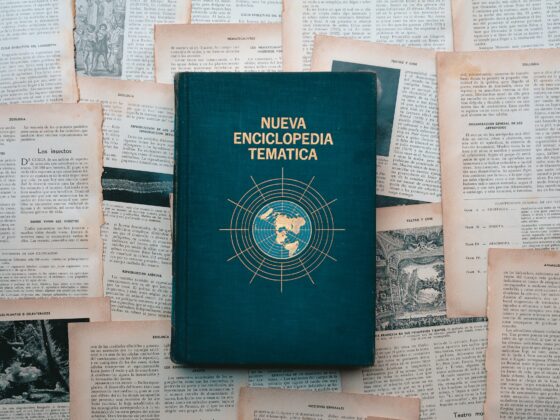Key Takeaways
- The AI-Native Distribution Strategy is crucial for the travel and hospitality industry to remain competitive by 2030.
- AI-driven channels will dominate, emphasizing the need for structured, real-time data through APIs.
- Hoteliers face challenges with data silos and trust issues, impacting direct bookings and the rise of AI agents.
- Investing in unified data architecture will enable hotels to leverage AI effectively, enhancing direct channel profitability.
- Adoption of AI technologies will shift distribution dynamics, reducing dependency on OTAs while emphasizing loyalty and direct customer relationships.
Part 1: The Existential Shift and the AI-Native Distribution Strategy
The advent of Agentic AI is not just another technology trend; it is a seismic event forcing an API-first distribution mandate in the travel and hospitality industry. Based on decades of experience in the vendor and operator ecosystem, I believe the commercial winners in this new era will be those who move swiftly to build an AI-native architecture. The time for static distribution is over; the future rewards speed, data completeness, and strategic control.
The Channel Mix and Power Shift
The channel mix will change, but not through a simple overnight disruption; rather, through a strategic re-alignment of data access and transaction capability. The shift will favor channels that are “AI-native“—those capable of providing real-time, rich, and dynamic data through robust, single API calls. This is the essence of an AI-Native Distribution Strategy.
Part 2: The Critical Roadblocks: Data Silos and the Trust Gap
1. AI is Only as Smart as the Data it Eats: The Operational Roadblock
We must emphasize that AI is only as smart as the data it eats. The commercial success of the direct channel is currently being undermined by decades of fragmented operational data.
- The Fragmentation Reality: Nearly half of hoteliers 49% struggle to access the data they need, with disconnected systems cited as the main obstacle. The data sits in silos—PMS, CRS, CRM, POS—and the systems are often trapped by outdated APIs and integration fees. This is the challenge of solving hotel data silos.
- Vertical vs. Horizontal AI: The transformative shift we are forecasting requires Vertical Use Cases specific to distribution (AI for personalized booking, dynamic pricing) which unlock genuine revenue. These are stuck because the required foundation is fractured. Current Horizontal AI (chatbots, Q&A) only delivers “diffuse, hard-to-measure gains”.
- The Strategic Mandate: The “AI-first hoteliers” understand that investing in a unified data management system and clean data governance is the foundational step that must precede any visible AI feature.
The Psychological Hurdle: Trust and Delegation
The single greatest bottleneck to the commercial forecast—especially the shift to direct/Agentic AI booking—is not technology, but human psychology.
- The Trust Gap: Only 6% of global consumers fully trust AI outputs. While travelers trust AI for research and discovery (which surpasses social media and OTAs), the willingness to grant AI full autonomy to book is significantly lower.
- The Commercial Imperative: To close this gap, the distribution channel must offer Transparency, Explainability, and a Human-in-the-Loop option. Over-automating touchpoints risks degrading the essential trust and loyalty that defines hospitality.
2. Cost of Booking and Profitability
The overall cost of customer acquisition (CAC) for hoteliers will become a game of intelligent trade-offs, making the battle for the direct channel simultaneously more costly and more profitable.
- The CAC Balancing Act: Costs Go Up, Conversions Get Smarter: Costs are rising sharply across digital platforms (up 20% to 40% YoY in some areas). While AI-powered ad campaigns like Google’s Performance Max for travel goals (PMTG) can increase conversion rates and reduce CAC in specific campaigns (down 19% YoY for some hotels), this is only a partial offset against the general tide of rising media spend driven by intensified competition.
- The New Cost: The AI Transaction Tax: The rise of Agentic AI creates a new de facto “transaction tax“. The money saved on human sales effort is simply re-routed to pay the AI’s gatekeeper, whether through commission to an OTA or escalating ad costs for visibility in Google’s AI Overviews. This highlights the cost of AI booking intermediaries.
- Profitable Direct Channel: Reward for AI-Native Investment: Hoteliers who do invest in the necessary infrastructure (a unified, real-time data layer) will see a more profitable direct channel. AI enables dynamic, real-time pricing and channel-specific profitability optimization, helping hotels reduce OTA dependency and drive significant revenue gains. This is the goal of reducing OTA dependency tech.
3. The Direct Channel and Cutting Off Supply
The battle for the direct channel will become a game of intelligent trade-offs, making it simultaneously more costly and more profitable. We must face the strategic reality that the hospitality sector is only one small piece of the consumer’s full trip cycle. Our technology cannot influence a traveler’s choice of AI agent (Gemini, Copilot, etc.). Therefore, the goal is not to “beat Google” on the initial query, but to shift all investment into maximizing digital product supremacy within the single segment we own—the booking—thereby making our product the inevitable choice once the traveler enters the final selection phase.
Will the Direct Channel Truly Increase?
Yes, but only for those product providers (hoteliers) who invest in an AI-native architecture. The new competition is not a static OTA website, but the AI agent itself, which gravitates towards the simplest, most complete, and most accurate data source. Success hinges on:
- Structured Data and GEO: Providing clear, structured content optimized for Generative Engine Optimization (GEO) to ensure the hotel is cited and linked by AI search.
- Loyalty: Leveraging loyalty programs as a “trump card” to guide an AI agent’s booking preference.
- Seamless Transaction: Offering a full-spectrum transaction—room, dining, activity—via a single API call, which is the current “nightmare” that AI is designed to solve.
Is it Realistic to “Cut Off Supply” to Third Parties?
No, not wholesale, but strategically. Complete decoupling is unlikely due to the massive scale, global reach, and established customer base of OTAs.
- Strategic Decoupling: AI provides the leverage to rebalance the power dynamic. Hoteliers can intelligently use AI-driven revenue management to offer better pricing, personalized loyalty discounts, and unique product bundles exclusively through direct channels. The goal shifts from eliminating the third party to reducing dependency and making the direct channel materially superior and more profitable. This is a core hotel OTA bypass strategy.
Can Hospitality Get Their Distribution House in Order in Time?
It is an urgent race. The core issue is that many hotels, particularly independents and those on legacy systems, lack the unified, bidirectional data stream and API infrastructure to support this new AI ecosystem. The responsibility for building this “connective tissue” falls squarely on technology vendors. Hoteliers who fail to invest in this layer risk being left “invisible” to the very systems guiding future travel decisions. This is the hotel tech investment for AI mandate.
4. The Future of Advertising and Search
Will Online Hotel Ads Really Go Away?
No. The big companies (Google, etc.) will not drop that revenue stream. Instead, the nature of the ad will change. The “ad” in an AI-native world is less about a static banner and more about a preferred, high-authority citation within the AI agent’s response, or a highly personalized, dynamic ad delivered via AI-powered systems. As one expert noted, the Internet is “quietly adopting the Ad Tech playbook—without the ads”.
How Might AI Search Be Impacted by AI? It becomes the new “Front Door”.
AI-powered search (like Google’s AI Overviews) is fundamentally changing discovery. Travelers now use natural, conversational language (e.g., “Where should I stay for a quiet, romantic getaway in Barcelona next month?”). Google, with its consolidation of the AI Agent (Gemini, AI Overviews) and Google Travel, is strategically positioned to dominate this new ecosystem. This unique, single-entity control—while raising antitrust concerns—represents, from a strategic value perspective, a more defensible long-term relationship for the hotelier.
- Zero-Click Searches: AI Overviews often provide a summarized answer at the top, reducing traffic flow to websites.
- Credibility is Key: AI tools prioritize hotels that showcase strong credibility, high-quality reviews, structured data (Schema Markup), and authentic, conversational content.
- Data Source, Not Destination: The hotel website shifts from being a visual destination to being a structured data hub that feeds the AI engine.
5. The North Star: Leveraging Data for Direct AI Access
We’ve established that the shift to an AI-native model is mandatory, but what is the ultimate strategic prize? The Mega-Brands (the Hiltons, Marriotts, and Hyatts) have the scale and inventory to negotiate direct API partnerships with the emerging GenAI platforms, effectively bypassing OTAs entirely for high-margin, loyal bookings.
This move establishes the irrefutable strategic North Star for the entire industry. It justifies the massive investment in AI-native architecture by confirming that the goal is not just incremental revenue, but defensible market control.
The key asset that allows mega-brands to achieve this direct leverage is Loyalty Data, specifically the unified, real-time guest profile. An AI agent searching for a booking is not swayed by emotional advertising; it sorts options based on algorithmic criteria and personalized value.
- The Single Asset that Democratizes Leverage: For independent and scaling hoteliers, the focus must shift from chasing scale to pursuing algorithmic relevance. This is achieved by creating a flawless, unified guest data profile that allows the hotel to offer the AI agent a personalized, exclusive product bundle (guaranteed upgrade, early check-in, dining credit) in the API call.
- The New Gatekeeper of Loyalty: This personalized value proposition makes the direct channel the superior choice for the AI, transforming loyalty programs into the industry’s new algorithmic currency and the “new gatekeepers of loyalty“.
Technical Caveat: The Road to Realization It is critical to state that the ability of current AI Agents to execute this “Loyalty Trump Card” is presently constrained by their own stateless architecture and limited context windows. For the seamless, multi-system reasoning (PMS, CRM, Loyalty) required for this vision to become a reliable, real-world utility, we require vendor API maturity and the widespread adoption of robust Model Context Protocols. This does not diminish the goal; it confirms that the investment in unified data architecture remains the only way to be ready for the technology when the current technical limitations are inevitably resolved.
The investment in a robust, unified data architecture today is the cost of entry for this ultimate prize: securing a direct-to-AI distribution path that guarantees control over your highest-value customer relationships.
6. GDS/Corporate Travel: The Hybrid Investment Mandate (Phase 2)
The corporate travel and B2B market represents a profitable, structured segment that operates under different rules than the consumer market. While the consumer segment is rapidly moving to direct-to-AI APIs, the corporate world remains tethered to Global Distribution Systems (GDS) due to the reliance on centralized contracts, expense compliance, multi-component itinerary management, and legacy integration.
We predict an inevitable, segment-specific shift where GDS platforms (Sabre, Amadeus) do not disappear but instead become direct AI partners through an accelerated phase-two evolution.
- The Hybrid Model: The future infrastructure mandate requires a hybrid GDS/API model. GDS providers are actively building AI-powered API layers (like Sabre’s Agentic-AI-ready APIs) on top of their existing platforms. This hybrid approach combines the GDS’s strength in structured fare management and compliance with the API’s ability to provide real-time, personalized NDC content and dynamic pricing.
- Future Proofing: This development ensures that IT and Finance budgets must be allocated now for this hybrid infrastructure. Investing in systems that can seamlessly handle both traditional GDS content and the emerging NDC/AI-native data streams is crucial for future-proofing distribution and capturing the high-value corporate traveler, who values security, quality, and simplified compliance above all. This investment is the crucial preparatory step for Round 2 of the distribution battle, anticipating that AI platforms will eventually seek to cut out the OTA middleman to eliminate the AI Transaction Tax and capture greater revenue for themselves, aligning perfectly with the hotelier’s direct-booking mandate.
Risk Synthesis: Defense Against Volatility
Beyond commercial profitability, this shift is a necessary act of risk mitigation and self-preservation. The current dependency on giant platforms exposes hoteliers to systemic volatility created by global antitrust scrutiny (DMA, DOJ rulings) and sudden, unpredictable regulatory code changes. We’ve already seen how legislative action intended to curb gatekeepers can inadvertently raise costs and lower visibility for independent hotels. The only robust defense against this external, existential threat is achieving data sovereignty and a proprietary AI-native architecture that cannot be compromised by another entity’s legal, commercial, or technological mandate.
TRAVHOTECH’s Stake in the Ground (October 2025)
I. The Core Confidence: The Irreversible Mandate
II. Corporate Travel, GDS, and the B2B Impact
III. Prediction on Channel Mix: The 2030 Forecast
The consensus forecast, which we support, predicts Direct Digital will become the leading channel by 2030, driven by the necessity of leveraging AI and loyalty programs.
Conclusion
AI is not simply another new layer of connectivity producing the same outcomes. It is a catalyst forcing an “API-first” distribution model that rewards speed, data completeness, and strategic control over the product offering.
The commercial winner in this new era will be the product provider (the hotel) that successfully empowers its technology vendors to build the AI-native infrastructure, leveraging real-time data and loyalty to establish a direct-to-AI connection that bypasses the traditional intermediary layer. This strategy must be underpinned by an understanding that while AI drives efficiency, the fundamental human need for transparency and trust remains the greatest challenge to unlock true commercial success.


















